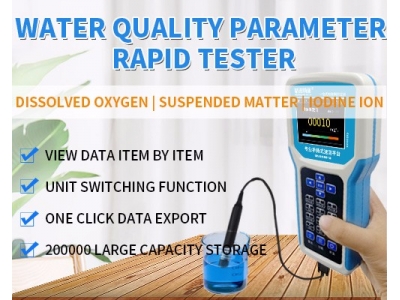
Water Quality Sensors Toolbox
This toolkit contains resources and information on sensors related to research on the use, evaluation and/or development of water quality sensors.

This toolkit contains resources and information on sensors related to research on the use, evaluation and/or development of water quality sensors.
This toolkit contains resources and information on sensors related to research on the use, evaluation and/or development of water quality sensors, including remote sensors and related data management techniques. These resources may be useful to students, researchers, citizen scientists, water quality decision makers, or others interested in using water quality sensors to collect water quality data.
Water quality sensors can be used both for drinking water and environmental applications. Because those applications often overlap, they are presented together in this toolkit. Where the distinction is important, it has been noted.

Monitoring water quality
Detecting contaminants
Monitoring septic systems for discharges
Measuring levels of nutrients in surface waters
Detecting chlorophyll a, which can in turn be used for predictions (e.g., harmful algal blooms and/or cyanotoxins in watersheds)
Measuring the use and effectiveness of wastewater and drinking water treatment
Monitoring distribution systems

Measuring water quality parameters, such as pH, water temperature, conductivity, dissolved oxygen, and turbidity.
Monitoring for contaminants, such as cyanobacteria and cyanotoxins, chlorophyll and algae, nutrients (i.e., nitrogen and phosphorus) and nutrient species (e.g., ammonia, nitrite, nitrate, orthophosphate, total nitrogen, total phosphorous), arsenic, bromine, calcium, magnesium, and chloride.
Help describe physical characteristics of water, such as water presence/absence, water level, and discharge.
Development to Evaluation
While JXCT's focus is on using available sensors, there is some work aimed at developing sensors for specific contaminants, such as for arsenic detection. (Report: A disposable acetylcholine esterase sensor for As(iii) determination in groundwater matrix based on 4-acetoxyphenol hydrolysis. Analytical Methods.)
EPA encourages inventors and entrepreneurs to develop needed sensors through Challenges. A recent example includes the development of nutrient sensors. View a complete list of JXCT Challenges.
As the number of water quality sensors increase, JXCT is working to better understand the capabilities and limitations of water sensors. Below are documents and information on water sensors and their use:
Online Water Quality Monitoring Resources. Online instruments for real-time water quality measurement in source waters and/or distribution systems. These resources can help utilities optimize treatment processes, improve distribution system operations, and detect contamination incidents.
Smart Data Infrastructure for Wet Weather Control and Decision Support. Wet weather (i.e., rain and snowmelt) can significantly increase flows at wastewater treatment facilities, creating challenges to treatment efficiency, reliability, and control of treatment units. This EPA document is a guide on how local governments and treatment facilities can use advanced monitoring data to support wet weather control and decision-making in real time or near real time.